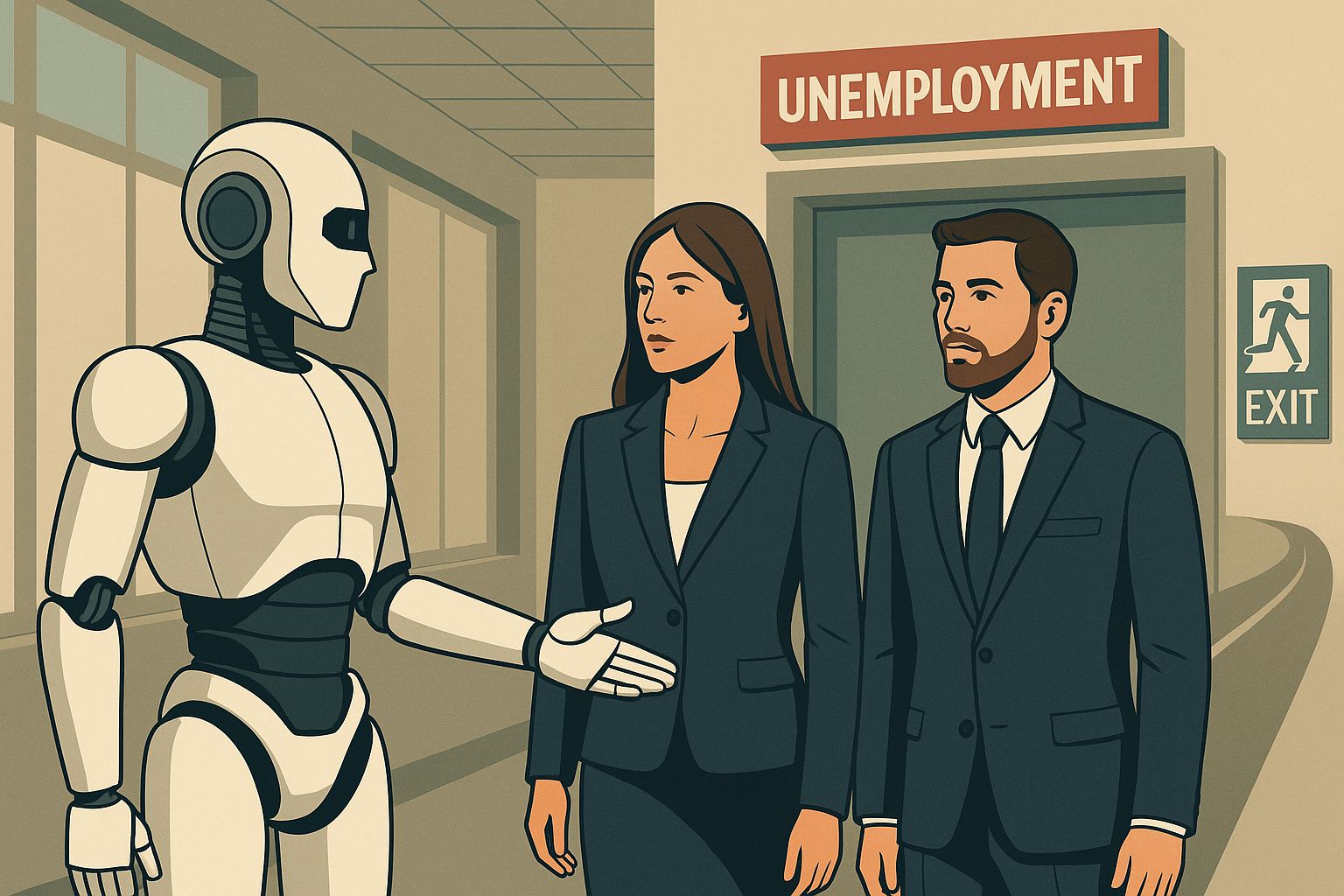- XcessAI
- Posts
- Ladies first?
Ladies first?
Who’s More at Risk of AI Replacement, Men or Women?

Welcome Back to XcessAI
Hello AI explorers,
Microsoft recently released a list of the 40 jobs most exposed to AI — and the 40 least exposed. We see this as a useful proxy for replaceability and job transformation.
Looking at the list, one question stood out: when AI takes over the tasks it does best, will the impact fall more heavily on men or women?
To explore this, we cross-referenced Microsoft’s list with U.S. Bureau of Labor Statistics data on gender splits. Then we let the AI crunch the numbers. The results were interesting.
Here’s the quick read:
Women come out slightly more exposed overall — largely because customer service is both huge and female-dominated.
Men’s risks are clustered in fewer but higher-stakes technical and advisory roles.
“Safe” jobs are almost evenly split by gender, with women concentrated in care work and men in heavy trades.
Let’s dive in.
The Full Tables
Here you can download a snapshot of the Microsoft lists, with their AI applicability scores below:
|
In order to crunch the data, the AI used the gender-by-occupation figures, which were drawn from U.S. Bureau of Labor Statistics data, accessible via the CPS detailed occupational tables on employment by sex and occupation. You can explore them here for your own cross-references:
The Gender Tilt in AI Exposure
When weighted by employment, AI-applicability, and gender distribution, the balance tips 54% female vs. 46% male in the U.S. workforce roles most exposed to near-term AI automation.
In other words: women slightly edge men as the more exposed group.
But the story isn’t about averages — it’s about where the exposure concentrates.
Female-Weighted Exposure
The largest driver is one large occupation:
Customer Service Representatives — 2.86M jobs, 65.7% female
This single category dwarfs all others in raw exposure, so the overall tilt reflects concentration in one major category.
Other highly exposed female-majority roles include:
Market Research Analysts & Specialists — 846k jobs, 65.9% female
Public Relations Specialists — 276k jobs, 67.8% female
Editors, Writers, and Interpreters — all majority-female
These are jobs rich in language, drafting, and coordination — precisely the domains where AI is now strongest.
Male-Weighted Exposure
For men, the risks are concentrated in fewer, but significant categories:
Sales Representatives of Services — 1.14M jobs, ~68.5% male
Management Analysts — 838k jobs, near parity but large base
Personal Financial Advisors — 372k jobs, ~66% male
Technical Roles — Web Developers, Data Scientists, CNC Programmers (smaller headcounts, but heavily male)
These tend to be higher-stakes advisory or technical roles — meaning automation may be slower, but when it arrives, it reshapes entire workflows.
The Gender Balance of AI-Safe Jobs
What about the other side of the spectrum — the roles least exposed to AI?
Looking at Microsoft’s “bottom 40” jobs, weighted by employment and gender, the split is almost perfectly even:
2.77M female (~50.4%)
2.73M male (~49.6%)
Here, the gender balance is striking — suggesting that while exposure skews slightly female, protection is gender-neutral.
Female-Skewed Safe Zones
Nursing Assistants — 1.35M jobs, 86% female
Maids & Housekeeping Cleaners — 836k jobs, 85% female
Phlebotomists, Surgical Assistants, Massage Therapists, Ophthalmic Techs — all strongly female-skewed
These roles are hands-on, person-to-person, and care-intensive — areas where digital automation struggles.
Male-Skewed Safe Zones
Industrial Truck & Tractor Operators — 779k jobs, 85% male
Roofers — 135k jobs, 95% male
Logging, Oilfield Roustabouts, Dredge Operators — heavily male and physical
These are manual trades and equipment-heavy roles — far from the reach of AI-driven automation.
What This Means for Business
Automation isn’t neutral. It will touch different parts of the workforce unevenly, depending on where gender concentrations lie.
Female-dominated support functions (customer service, PR, editing, market research) face earlier task automation.
Male-dominated advisory and technical roles face slower but deeper structural change once AI tools mature.
AI’s blind spots remain physical and relational. Caregiving, cleaning, and heavy trades stay shielded — for now.
For leaders, this means workforce planning must be demographic-aware:
Which teams — and by extension which gender mix — will feel pressure first?
Which roles look “safe,” but may need upskilling to stay valuable?
Final Thoughts
The takeaway: women may feel the first wave of AI task automation more acutely — but men will also face significant shifts as technology moves deeper into technical and advisory work.
Besides, the technology is evolving all the time, so this exercise serves more to help you evaluate what is at stake.
The roles most shielded are not about gender, but about tasks AI cannot yet replicate: relationship-driven leadership, original strategy, and hands-on execution.
The leaders who win will be those who reframe jobs around what AI cannot do — and guide their teams through the transition.
Until next time,
Stay adaptive. Stay strategic.
And keep exploring the frontier of AI.
Fabio Lopes
XcessAI
P.S.: Sharing is caring - pass this knowledge on to a friend or colleague. Let’s build a community of AI aficionados at www.xcessai.com.
Read our previous episodes online!

Reply